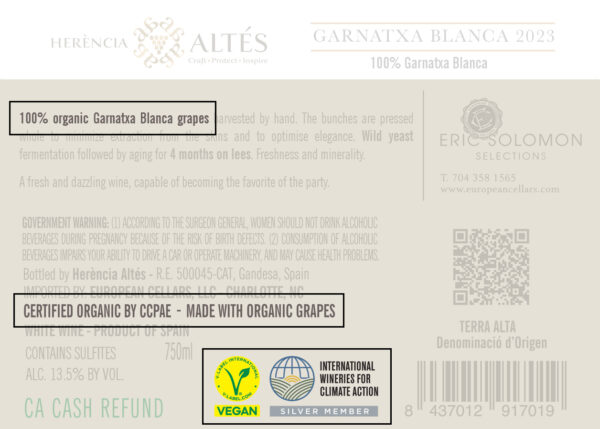

The presence of organic and biodynamic certifications on a wine label has become a powerful selling point in today’s market, but have you noticed there are less and less of them? Well, there is a reason for that. Consumers are increasingly drawn to wines that promise fewer chemicals, greater environmental sustainability, and an elixir-of-life type of naturalness. But what do these certifications really mean, and what challenges do winemakers face in obtaining them? Understanding the differences between organic and biodynamic wines, as well as the rigorous standards they must meet, can help consumers make informed decisions about their wine purchases.
Organic wine is produced from grapes grown without synthetic fertilizers, pesticides, herbicides, or genetically modified organisms (GMOs). The fermentation process follows strict regulations prohibiting artificial additives and limiting the use of sulfites. While standards vary across regions, organic certification ensures that all practices align with environmental sustainability and soil health.
Biodynamic wine production follows the principles set forth by Rudolf Steiner, incorporating organic farming with lunar cycles, composting, and natural soil enrichment. The EU’s biodynamic certification, granted by organizations such as Demeter, requires that vineyards maintain biodiversity, use only natural treatments, and adhere to cosmic rhythms in farming. Unlike organic wine, biodynamic certification extends beyond eliminating chemicals to include a holistic approach to vineyard health.
Acquiring organic certification is a rigorous process that requires wineries to fully convert their vineyard practices, often taking up to three years. During this period, vineyards must adhere to strict organic guidelines without receiving full certification benefits. Certification fees vary but can range from several hundred to thousands of euros annually. These costs include inspection fees, soil testing, and administrative expenses. Converting a vineyard to organic practices also incurs higher operational costs due to increased manual labor and natural treatments. Producers must navigate regional and national laws regarding organic production, which often involve extensive documentation, compliance checks, and periodic audits. In the EU, different certification bodies exist across France, Spain, and Italy, each with specific requirements. While organic certification is costly, the return on investment can be significant. Organic wines often command higher prices, appeal to a growing eco-conscious consumer base, and benefit from increased marketability. Additionally, healthier soils and sustainable practices lead to long-term vineyard resilience.

Example of an organic wine back label – specification of organic grapes, symbols, and who certifies their grapes
In the United States, organic certification is governed by the USDA, which mandates that organic vineyards use no synthetic pesticides or herbicides, no genetically modified organisms (GMOs), and maintain sulfite levels below 10 parts per million (ppm) for USDA Organic certification. Additionally, organic-certified yeast must be used for fermentation. In the EU, organic wine certification includes the restriction of synthetic chemicals and fertilizers, limited sulfite levels (100 ppm for red wine, 150 ppm for white and rosé), mandatory organic farming practices for at least three years before certification, and soil health and biodiversity preservation requirements.
Organic and biodynamic wines are free from synthetic pesticides and chemicals, which some consumers believe can contribute to better heart health and fewer adverse reactions. Conventional wines may contain additives like commercial yeasts, artificial tannins, and stabilizers, whereas organic and biodynamic wines rely on natural processes. Many wine enthusiasts appreciate organic wines for their terroir-driven authenticity, as minimal intervention allows natural flavors to shine through. However, there are both pros and cons to consider. Organic wines contain no synthetic chemicals, have lower sulfite content (depending on certification), are environmentally sustainable, and may be better for health. On the other hand, they tend to be more expensive, have a shorter shelf life due to lower preservatives, and the certification process can be restrictive for small producers.
Ultimately, organic and biodynamic certifications offer a layer of transparency that many wine drinkers appreciate. While the costs and challenges of certification are significant for winemakers, the benefits in terms of consumer trust, environmental impact, and product quality make it a worthwhile pursuit. As more consumers prioritize sustainability and natural products, the demand for organic and biodynamic wines is likely to continue growing, shaping the future of viticulture.
–By Debbie Antoszyk